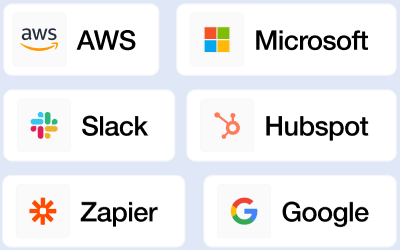
White Label Survey
for Custom Brand Surveys











Why White Label the Survey At All?
Benefits of Using White Label Surveys
White Label Survey Solution: Easy, Effective, and Exceptional
Enjoy Seamless, Customizable, and Impactful Survey Experience

Send Surveys From Your Domain
Replace SurveySensum’s branding with your own custom domain. When customers see it coming from your domain, they are more likely to respond – leading to high response rates.
Create Surveys in Your Brand Look and Feel
Use your brand’s logo, color, font, and other elements in the survey emails ensuring that the respondents know it's you!


Send Email Surveys in Your Branding
Use your brand’s logo, color, font, and other elements in the survey emails ensuring that the respondents know it's you!
Customize Email Sender Domain
Boost email open rates and improve survey responses by sending email surveys from your domain — your company name.com.


Surveys in Your Brand Theme on All Channels
Don't just customize your email surveys. Ensure that your brand tone is consistent on all channels - website, chatbot, emails, Whatsapp, etc.
Branded for Every Screen
No matter if participants use a phone, tablet, or laptop, our white-label surveys ensure your brand stays front and center – a consistent look that represents your identity perfectly across all screens.


Tailor Intro & Thank You Screens
Personalize your survey's introduction and thank you screens with your brand’s unique style and design, ensuring a consistent experience from start to finish.
What Makes Us Unique?
Our Commitment
Ease of Use
We made sure that the product is so easy to use that you can launch any survey in just 30 minutes and share it with all your customers
“The best thing about SurveySensum is its simplicity. The user interface is so simple, that it made creating questions very easy, even for a new person.”

CX Consultation
We understand that you might not have a research team. So, our CX experts analyze the feedback and offer insights to boost your sales.
“Whenever we needed support, you guys were right there. You’re always ready to offer us any kind of expertise that we might ask for.”

Exceptional Support
It's not just the product, our support team comes with it. Wherever and whenever you get stuck,we guarantee to offer 1 hour SLA Support.
“Tools and features can be replicated, but the kind of support and ease that SurveySensum provides is exemplary.”

Frequently Asked Questions
Everything You Need To Know About Branded Survey
What Sets Us Apart
Drive Revenue with Expert CX Support
Raise your hand if you are struggling with
- Launching your feedback program
- Analysing feedback from the spreadsheets
- Making sense of the dashboard
- Identifying key drivers that ACTUALLY impact your bottom line!
- Ditch the struggle with experts in the field.
- SurveySensum’s CX Expert will walk with you till the end of the race till you win the prize - boosted revenue!
 With no extra charge
With no extra charge






























